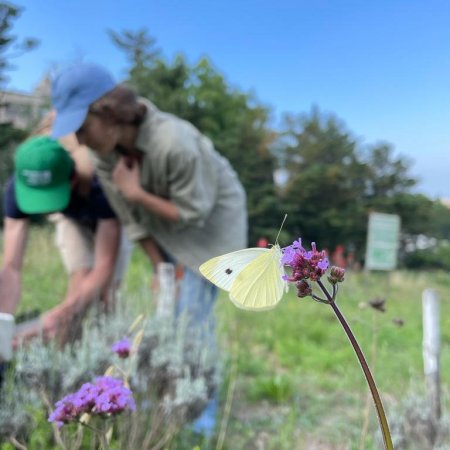Bienvenue au Parc Urbain des Papillons
Bienvenue au Parc Urbain des Papillons
Les travaux réalisés en 2010 sur les papillons de jour dans les parcs urbains de Marseille ont mis en évidence une richesse en espèces insoupçonnée (45 espèces), mais une diminution du nombre d'espèces et du nombre d'individus de la périphérie vers le centre ville. Ces recherches ont également démontré une perte d'espèces méditerranéennes suivant ce gradient.
Afin de suivre cette biodiversité urbaine sur le long terme et de comprendre son évolution, le Laboratoire Population Environnement Développement (LPED) met en place en 2012 un dispositif expérimental de recherche unique en France : le Parc Urbain des Papillons (PUP). Il s'agit de créer une zone attractive et un havre de paix pour les papillons au coeur de la deuxième Ville de France. C'est cette démarche que nous souhaitons partager.
Afin de suivre cette biodiversité urbaine sur le long terme et de comprendre son évolution, le Laboratoire Population Environnement Développement (LPED) met en place en 2012 un dispositif expérimental de recherche unique en France : le Parc Urbain des Papillons (PUP). Il s'agit de créer une zone attractive et un havre de paix pour les papillons au coeur de la deuxième Ville de France. C'est cette démarche que nous souhaitons partager.
Actualités du PUP
Actualités insectes
Vous souhaitez créer un PUP ?
Parce qu'il est important de favoriser les papillons en ville, nous vous encourageons à créer des PUP dans toutes les villes et les villages.
🦋 Pour vous donner un aperçu de ce dispositif et vous donner envie de le reproduire, notre démarche.
🦋 Pour le reproduire près de chez vous, le mode d'emploi.
🦋 Pour le reproduire près de chez vous, le mode d'emploi.


